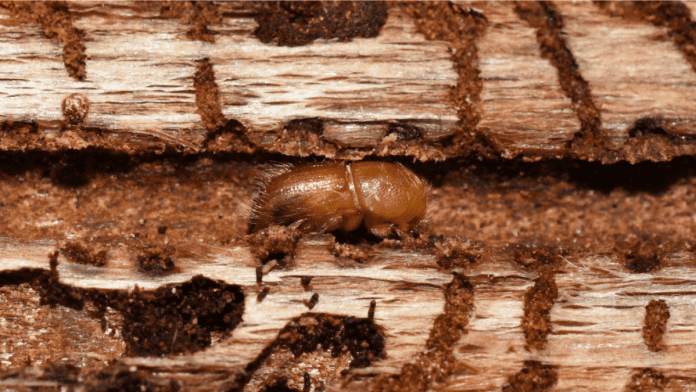News in Brief:
– Scottish Forestry urges heightened vigilance among stakeholders for signs of beetle infestation in light of warming temperatures.
– Collective reporting efforts and proactive surveillance are emphasised to swiftly detect and contain potential beetle threats to safeguard local ecosystems and livelihoods.
As Spring emerges in Scotland, Scottish Forestry issues a crucial call to vigilance for signs of beetles amidst warming temperatures. Adult beetles, seeking refuge during winter in conifer stumps and fallen trees, are now becoming more active with the changing season.
The ageny emphasises the importance of vigilance among woodland managers, landowners, processors, and tree nurseries. Stressed spruce trees, particularly susceptible to beetle infestations, warrant special attention, especially those impacted by drought or wind damage.
Cameron Macintyre, Tree Health Planning and Contingency Manager, mentioned the need for collective surveillance efforts. By promptly reporting any suspicious symptoms to TreeAlert, individuals can aid in swift identification and containment measures.
The eight-toothed spruce bark beetle poses a significant threat to spruce trees, including Norway and Sitka spruces. While Scotland’s climate may not be as conducive to Ips typographus as central Europe, it shares similarities with parts of Scandinavia where established populations exist, according to the agency’s statement.
Breeding populations have been detected in the south-east of England, prompting extensive eradication measures. Evidence suggests that beetles intercepted in Scotland likely arrived with imported materials.
To combat the spread, a GB-wide monitoring network, in collaboration with various forestry authorities, employs pheromone lure traps at ports, wood processors, and forest locations. These efforts aim to detect and intercept potential infestations, mitigating the risk to local forests.



